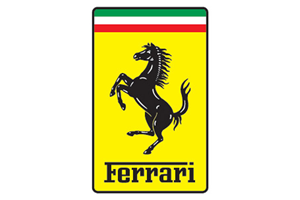


This edition of the Ferrari F50 GT1 4.7l V12 is the 6 speed / Manual version and was first brought out in 1996. This was at around the same time as the introduction of the 1997 TVR Speed 12 7.7L V12 and the 1997 McLaren F1 GT 6.1 V12.This particular Ferrari F50 has a 4698cc Naturally Aspirated Petrol powerplant with 12 cylinders in a V formation.
The F50 shares its Petrol V12 engine configuration with the likes of the 2021 Aston-Martin Valkyrie Coupe 6.5 V12 and the 2021 Aston-Martin Valkyrie Spider 6.5 V12. If you're looking for other fast cars which share the F50's Rear Wheel Drive, Coupe combination then how about the 1982 Fiat X1/9 1.5 8V or the 1965 Aston-Martin DB6 1965.
Weighing in at 907 kgs (1999 lbs) this makes the Ferrari F50 GT1 4.7l V12 in the same weight category as the 2020 Lotus Elise Sport 220 1.8 Supercharged or the give or take 50kg.
In terms of power the 4698cc 60V V12 engine produces 750 bhp (559 kW) @ 10500 rpm similar to the 2023 Aston-Martin Valour 5.2 V12 Twin Turbo (759 bhp) or the 2023 McLaren 750S Spider 4.0 V8 Twin Turbo (740 bhp).
The Naturally Aspirated V12 throws out 384 lb-ft (520.6 Nm) @ 7000 rpm placing it with cars of similar torque performance figures such as the 2024 Mazda CX-90 S 3.3 Turbo (369 lb-ft) or the 2023 Porsche Cayenne 3.0 V6 Turbo (369 lb-ft).
If one combines the weight with power or torque performance for the Ferrari F50 you can get a better idea of it's real world performance.
![Hennessey Venom GT 6.2L V8 - [2010] image Hennessey Venom GT 6.2L V8 - [2010] image](/editionimages/695.jpg)
The 2010 Hennessey Venom GT 6.2L V8 (844.2 bhp per ton) has similar Bhp Per Ton stats as the Ferrari F50.
The Ferrari F50 has a Power to weight ratio of 826.9 bhp per ton and 423.3 lb-ft per ton. Bhp Per Ton figures of the 1996 F50 competing with the 2010 Hennessey Venom GT 6.2L V8 (844.2 bhp per ton) or the 2022 Koenigsegg CC850 4.9 V12 Twin Turbo (844.0 bhp per ton).
If you agree with the late great Carroll Shelby then arguably an even better indicator of potential performance, Torque. Use weight as well and you end up with - Torque per ton, with the Ferrari F50 generating around 423.3 lb-ft per ton. If you're curious as to what other cars have as much torque to weight then look no further than the 2019 Chevrolet Corvette ZR1 6.2 V8 Supercharged C7 (447.4 lb-ft per ton) or the 2019 Chevrolet Corvette ZR1 6.2 V8 Supercharged C8 (447.4 lb-ft per ton).
With a 0-60mph time of 2.90 secs or a 0-100km/h (0-62mph) of 3.0 secs, this made the Ferrari F50 GT1 4.7l V12 as fast as the 2022 Lotus Eletre R 905 bhp (2.90 secs) the 2021 BMW 5 Series M5 CS 4.4 V8 Turbo F90 (2.90 secs) the 2021 Chevrolet Corvette Stingray 6.2 V8 C8 (2.90 secs) the or the 2021 Maserati MC20 3.0 V6 Twin Turbo (2.90 secs). This Ferrari F50 GT1 4.7l V12 is also faster than the 2023 Pagani Utopia 6.0 V12 Twin Turbo (3.00 secs) the 2022 Lamborghini Huracan Tecnica 5.2 V10 (3.00 secs) the 2021 Nissan NSX Type S 3.5L V6 (3.00 secs) the and the 2021 Chevrolet Corvette Stingray Z51 6.2 V8 C8 (3.00 secs).
When talking about the performance of the Ferrari F50 on the drag strip it can reach a quarter mile in an estimated 8.79 secs @ 155.6 mph. Similar performance down the quarter mile can be found with the the 2004 Mercedes CLK DTM AMG 5.4 V8 (8.75 secs), the 2013 Jaguar XK R-S GT 5.0 V8 (8.77 secs), and the 2017 Mercedes SL Class 65 AMG Cabriolet 6.0 V12 (8.77 secs).
Modern performance cars are often artificially restricted to 155mph. The 1996 version of the Ferrari F50 GT1 4.7l V12 has a maximum speed of 234mph.
If maxing out your car on the AutoBahn is your thing and you're wondering what's faster than the 1996 Ferrari F50 GT1 4.7l V12 then how about the 2020 Koenigsegg Gemera 2.0 Turbo Petrol Hybrid (249 mph), the 2013 Koenigsegg Agera S 5.0 V8 Hundra (249 mph), or the 2005 SSC Aero SC 8T 6.3L (249 mph).










Mercedes 600 SEL V140
Engine: Naturally Aspirated Petrol | 5987cc 48v V12
Top Speed: 159 mph
0-60mph: 6.70 seconds

Ford Focus ST 2.3 EcoBoost Automatic
Engine: Turbo Petrol | 2266cc 16v St4
Top Speed: 249.4 kph
0-100kph: 6.1 seconds



















